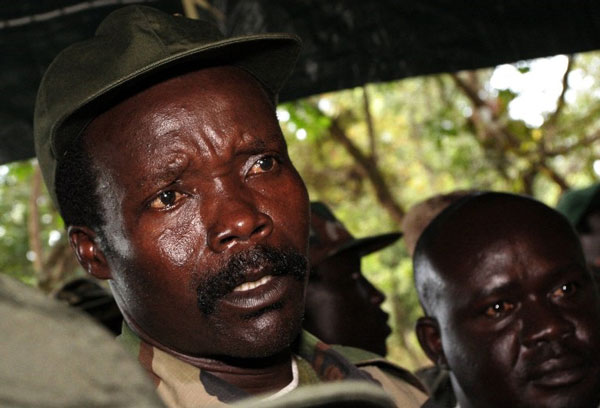
Army escorts for schools
Awach Primary Seven School in Awach sub-county was caught in the middle of pitched battles between the LRA and UPDF. As LRA fired mortars and grenades, teachers and pupils became embedded in UPDF combat operations after the school turned into a centre for displaced schools. Heavy security was deployed around it.
“UPDF soldiers would move with us, teachers and pupils, in the morning from the camp and then surround the entire school as classes went on. We would move in two sets,” says Robert Lakony, a teacher who saw it all.
Classes would end at strictly two in the afternoon.
“It would depend on the intelligence they get, if they got intelligence that rebels were nearby, then we would not be able to go to school that day,” he says. Soldiers, who would range between 30 and 60, escorted the students and teachers from the camp to the school and back; a distance of about 1km.
The school was founded in 1942 by the Catholic Church and the government took over later. It had only two classrooms at its founding and although there were few additions by the time Lakony joined, the real rehabilitation started after the rebels were completely routed from Awach in 2006.
Due to the noticeable improvements, the grades are improving. Awach had only one First Grade in four years; from 2002- 2006 but in 2012 they got two First grades, then three, six, two and four in following years, according to charts pinned up in the headmistress’ office in one of the two new blocks. It was put up by Northern Uganda Development of Enhanced Local Governance, Infrastructure and Livelihoods (NUDEIL), a USAID funded project that also refurbishes schools in neighbouring Pader district.
Lakony says Awach has introduced daily co-curricular activities to provide a wholesome education; music, dance and drama and farming on nearby land.
A stone’s throw away from Awach P7 School is Awach SS. In the middle of its compound is a rustic colonial structure that the school inherited at its founding in 1984. During the war, it found refuge in the offices of British American Tobacco (BAT), Sir Samuel Baker SS and other temporary structures in Gulu town in its various displacements in the 1990s.
When it returned to its original premises in 2009, Gulu Support the Children Organisation (GUSCO) came to its rescue with the construction of an administration block. Like the rest of the schools, Awach SS depends on donor support, including the sparkling blue-walled World Bank constructed classrooms.
Cwero Primary Seven School, located 25km from Gulu town, just off the Gulu-Kitgum Highway in Paicho sub-county was displaced for two years before it became an amalgamation centre in 1999. The two years were at Sir Samuel Baker SS, near town.
Parents pooled resources and put up temporary structures. World Vision joined hands with parents and other schools like Lapuda, Kalamaji, Pagik, Kititima and Mel-boke. The school had one block that was home to every school structure.
“The war was intense, there was a nearby detachment about 500 metres from the school. There were abductions nonetheless at night. Rebels would sneak in the camp which was just opposite the detachment,” narrates Kennedy Otto, a teacher at Cwero.
Although the rebels stayed away from the school, the tension kept the pupils in and out of school and the disruptions were unquantifiable. After the war, a partnership between government and Save the Children resulted into two blocks of seven classrooms.
The office of the headmistress, Lucy Olanya, is adorned with charts detailing allotments of capitation grants, date of births of teachers, members of the School Management Committee, and every other person with responsibility in the school.
The capitation grant for the first quarter of 2017 amounting to Shs3.4m has its allocations clearly marked out; scholastic materials, co-curricular activities, management, administration and contingency. “All this is about transparency,” Olanya says. The level of organisation and accountability would surprise any first time visitor to the school and more so, when compared to schools elsewhere. The government, USAID, and other donors have built classes and Olanya and her staff are optimistic about the future.
****
 The Independent Uganda: You get the Truth we Pay the Price
The Independent Uganda: You get the Truth we Pay the Price


